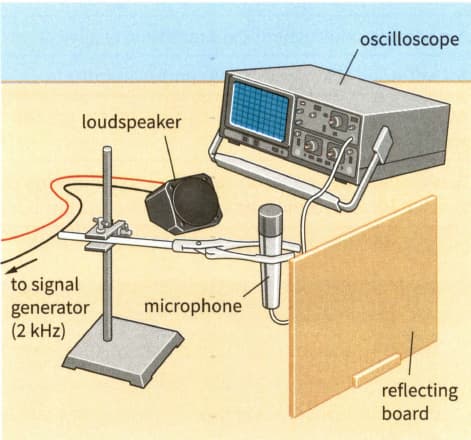David Sang and Graham Jones Solutions for Chapter: Stationary Waves, Exercise 3: Questions
David Sang Physics Solutions for Exercise - David Sang and Graham Jones Solutions for Chapter: Stationary Waves, Exercise 3: Questions
Attempt the practice questions on Chapter 14: Stationary Waves, Exercise 3: Questions with hints and solutions to strengthen your understanding. Physics for Cambridge International AS & A Level Coursebook 3rd Edition Digital Access solutions are prepared by Experienced Embibe Experts.
Questions from David Sang and Graham Jones Solutions for Chapter: Stationary Waves, Exercise 3: Questions with Hints & Solutions
(a) For the arrangement shown in Figure suggest why it is easier to determine accurately the position of a node rather than an antinode.

A stationary sound wave is established between the loudspeaker and the board.
(b) Explain why it is better to measure the distance across several nodes.
For sound waves of frequency , it is found that two nodes are separated by , with three antinodes between them.
(a) Determine the wavelength of these sound waves.
For sound waves of frequency , it is found that two nodes are separated by , with three antinodes between them.
(b) Use the wave equation to determine the speed of sound in air.
